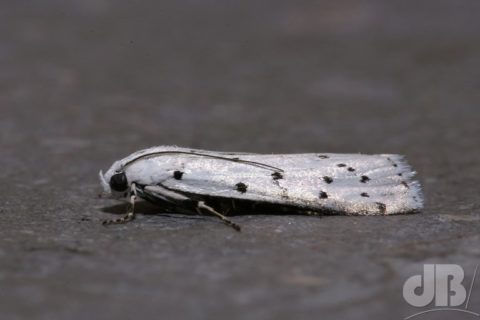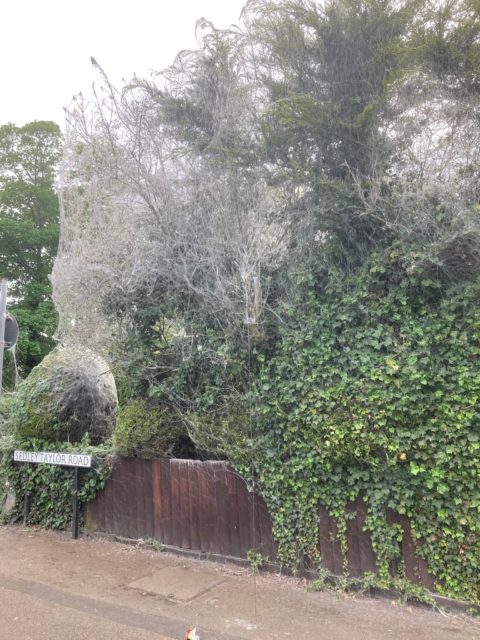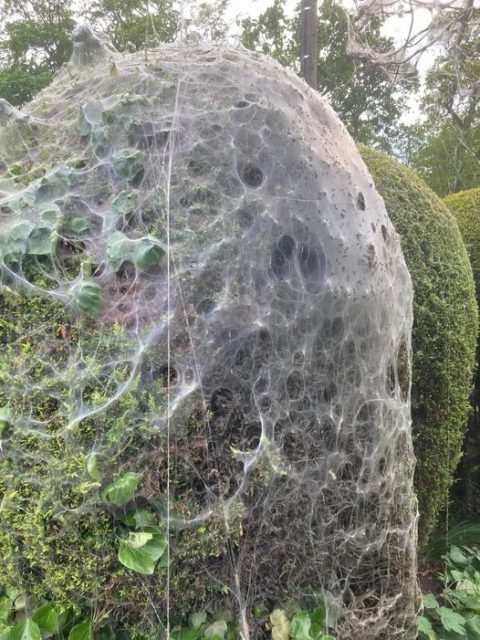UPDATE: I mentioned this larval nest to the County Moth Recorder, Bill Mansfield, and as he was not too far from the site in question, he took a look. It’s on a type of cherry tree, he found, so he’s narrowed down the moth species, to Bird Cherry Ermine, Yponemeuta evonymella. He points out that the tree is largely defoliated at this point and the web mostly now covering evergreen fir trees.

Friends often come to me with their lepidopteral and avian queries, it’s often a bird they’ve seen that they imagine is some great rarity, a mega, but often turns out to be something common, a Long-tailed Tit mistaken for a Great Grey Shrike for instance. One friend spots lots of moths in his farm-facing garden and on his allotment and jokingly emails me as MothMania…I can usually put him straight.

Another friend’s sixth-former offspring was perturbed to see what she thought was a huge spider’s web on the way to college, it shook her up a little. The friend asked me to take a look at the photo, I immediately thought – not spiders, moth larval nest! But, I didn’t know which species.
From the photos I’ve seen, I initially thought it to be the caterpillars of the Small Eggar moth, but that’s quite rare and present in the UK in specific, sporadic colonies. Other moths that make nests like this on bushes and trees would be The Lackey and the Brown-tail of which I’ve talked here in the past. It would be worrying if it were the invasive Oak Processionary Moth too, but thankfully it’s not that.
Over on Facebook, friend and fellow Cottenham moth-er Martin Fowlie suggested one of the ermine moths (Yponomeuta species) and that is what we’re settling on for the ID. Can’t be more specific without additional details at this point.

Photos kindly shared by Ken Bateup who posted on the Cambridgeshire Moths Facebook group.